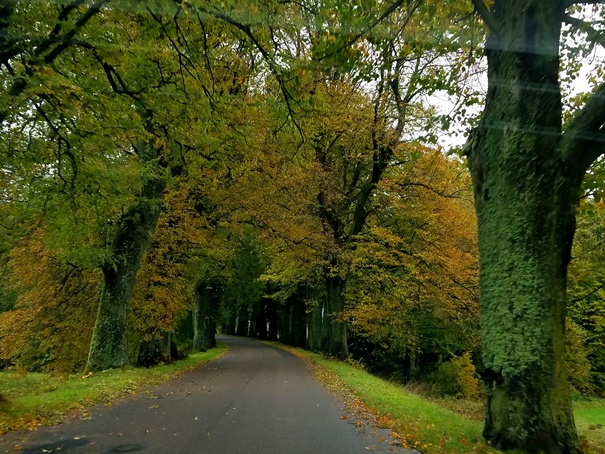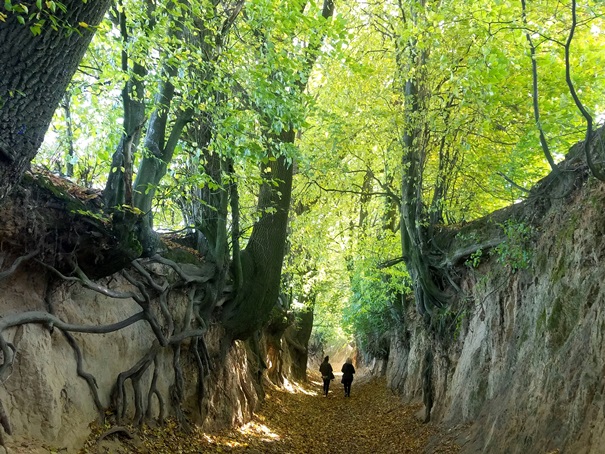Poland’s Picturesque Old Towns
Poland’s country roads are easy to navigate. All signs are written in the Latin alphabet as well as the Cyrillic script, and a good GPS leads one through some stunning countryside. Make sure, however, that you check the region in which the town you intend to visit is located. For example, there are several towns named Zamosc and Kasimierz Dolny is a small town, while Kasimierz is the historic Jewish quarter in Krakow.
We drove out of Warsaw into the countryside along winding roads shaded by amber autumn trees, and through miniscule villages surrounded by farms where champagne colored wheels of hay dotted the fields.


Our first stop was Kasimierz Dolny, an artist’s mecca that dates back to the Renaissance. Old Granaries – now boutique hotels and inns – face the slow flowing Vistula River. Above the town are an old fortified castle and a look-out tower which commands a splendid view of the town and the river snaking through the countryside.

Follow up with a cup of coffee and fresh pastry in Old Market Square where a typical small town market takes place twice weekly. Visit the historic Jewish quarter and the artist’s galleries and then head out to the Valley of the Roots. A short easy hike, it’s an unusual phenomenon.


Lastly, stop at the Jewish remembrance wall made from headstones plundered by the Nazis from Jewish graves. As our Polish guide remarked: “The horrors of the Holocaust and persecution of our vibrant Jewish community, turned our Polish forests into cemeteries.”

From Kasimierz Dolny drive on to Lublin for an overnight stay. Old Town Lublin which was completely restored after World War II, looks like a movie set, with its cobblestone streets, buskers, cafés, colorful buildings, and Gothic style Krakawska Gate.


Lublin Castle is worth a quick visit, whilst the Holy Trinity Chapel with its floor to ceiling Russo-Byzantine frescoes dating back to the 15th century, and are not to be missed. Take a tour of the 200 meter long Underground Route which runs under Old Town.

Continue on to Zamosc, eighty-five miles from Lublin and spend the night within the walled town. Designed by the Italian architect Bernado Moranda, it was a city where the east and west trade route converged. Poles, Italians, Germans, Ruthenians, Jews, Greeks, Armenians, and Scots lived in the burgher townhouses atop the arcades where trade flourished. From May – August outdoor concerts, theatre, and film festivals are held in the market square. It is no wonder that Zamosc was referred to as “Renaissance Pearl.” In 1992, it became a Unesco World Cultural Heritage site.

From Zamosc to Lancut (pronounced Wine-tsoot). Park around the square in Old Town. The Baroque style Lancut synagogue facing the square is a beautifully preserved example of the Galicia style synagogues dating back to the 16th century. Niches in the walls are inscribed with prayers written in Hebrew script, while the walls and ceilings are painted with frescoes of fruits and animals that invoke mystical connotations.

Have a cup of coffee at the quaint cafe/antique shop behind the hotel adjacent to the synagogue, and then prepare to spend several hours ogling the jaw-dropping beauty of the Potocki Family Palace. It’s an interior design lover’s paradise! I felt like Alice in Wonderland wandering from room to room. When I watched a fellow visitor’s jaw drop when she entered one of the rooms, I became aware of the expression that I wore.


End your journey in Krakow, the jewel of Poland. Deliver your car to the airport and catch a cab or bus into town. Hitler was so captivated by the beauty of Krakow that the city was never damaged during World War II. He intended it to be one of his trophies of the war. Plan on spending a couple of nights to explore and enjoy this beautiful, elegant, European city.


